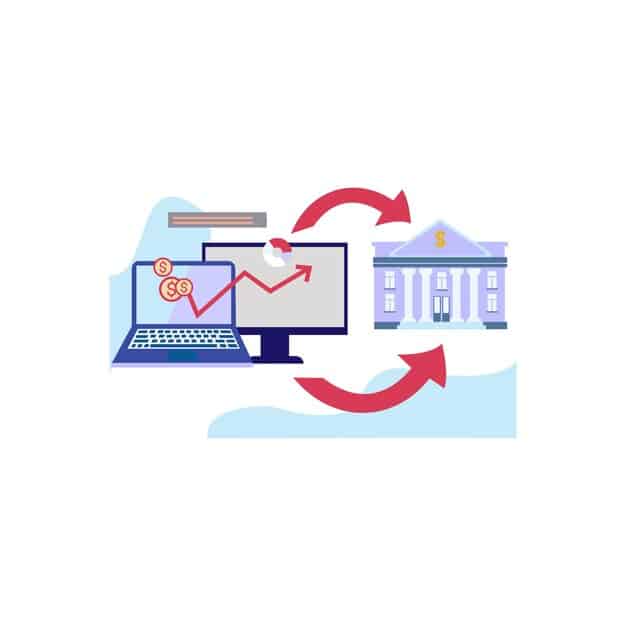Protect Your US Business: Chargeback & Dispute Prevention in Digital Payments

Protecting your US business from chargebacks and disputes in digital payments involves implementing robust fraud prevention measures, understanding chargeback reason codes, maintaining clear communication with customers, and leveraging technology solutions for efficient dispute resolution.
Navigating the world of digital payments can be challenging, especially when it comes to chargebacks and disputes that can impact your US business. It’s crucial to understand and implement effective strategies to protect your US business from chargebacks and disputes in digital payments.
Understanding Chargebacks and Disputes in the US Market
Chargebacks and disputes are an unfortunate reality for businesses accepting digital payments. In the US market, understanding the nuances of these issues is critical for effective prevention and resolution. Let’s delve into the core mechanics of chargebacks and disputes and why they pose a threat to your business’s financial health.
What are Chargebacks?
A chargeback occurs when a customer disputes a transaction with their bank or card issuer. The bank then reverses the transaction, debiting the funds from the merchant’s account. Chargebacks are designed to protect consumers from fraudulent or unauthorized transactions.
What are Disputes?
Disputes are similar to chargebacks but can arise from various reasons beyond unauthorized transactions, such as dissatisfaction with the product or service, or billing errors. Effective dispute management is essential for maintaining customer trust and preventing further issues.

The financial implications of chargebacks extend beyond the initial transaction amount. Businesses often incur chargeback fees, lose the merchandise or service provided, and suffer reputational damage. Therefore, proactively mitigating chargebacks and disputes is paramount for safeguarding your bottom line.
Implementing Robust Fraud Prevention Measures
Fraud prevention is the first line of defense against chargebacks and disputes. Implementing robust measures can significantly reduce the risk of fraudulent transactions and associated financial losses. Let’s explore some key strategies for bolstering your fraud prevention efforts.
Address Verification System (AVS)
AVS compares the billing address provided by the customer with the address on file with the card issuer. Mismatches can indicate fraudulent activity and prompt further verification.
Card Verification Value (CVV)
CVV is a three- or four-digit security code on the back of credit cards. Requiring CVV verification adds an extra layer of security, as fraudsters often lack physical access to the card.
- Utilize 3D Secure authentication for online transactions.
- Implement fraud scoring systems to identify high-risk transactions.
- Monitor transaction patterns for suspicious activity.
By implementing these fraud prevention measures, you can significantly reduce the likelihood of fraudulent transactions and associated chargebacks. Remember to regularly update your security protocols to stay ahead of evolving fraud tactics.
Understanding Chargeback Reason Codes
Chargeback reason codes provide valuable insights into the underlying causes of disputes. Analyzing these codes can help you identify patterns and implement targeted prevention strategies. Let’s explore the importance of understanding chargeback reason codes and how to leverage this information to improve your chargeback management.
Common Reason Codes
Each card network (Visa, Mastercard, American Express) has its own set of reason codes, but some common categories include fraud, authorization issues, processing errors, and customer disputes about the quality of goods or services.
Analyzing Reason Codes
By categorizing and analyzing chargeback reason codes, you can identify areas where your business is most vulnerable. For example, a high volume of fraud-related chargebacks may warrant enhanced security measures, while disputes about product quality may require improvements to your product or service.

Understanding chargeback reason codes empowers you to address the root causes of disputes, reduce your chargeback rate, and improve customer satisfaction. Regularly review and analyze these codes to stay informed about emerging trends and adapt your prevention strategies accordingly.
Maintaining Clear Communication with Customers
Clear and proactive communication with customers can significantly reduce the likelihood of disputes and chargebacks. Establishing open lines of communication fosters trust and provides opportunities to resolve issues before they escalate into formal disputes. Let’s explore some best practices for maintaining effective customer communication.
Providing Excellent Customer Service
Promptly respond to customer inquiries and complaints. Offer multiple channels for communication (phone, email, chat) and ensure your customer service representatives are well-trained to handle disputes and resolve issues efficiently.
Clear and Accurate Product Descriptions
Provide detailed and accurate descriptions of your products or services on your website and marketing materials. This helps manage customer expectations and reduces the likelihood of dissatisfaction. Include high-quality images and customer reviews to provide additional information.
- Send order confirmations and shipping updates to keep customers informed about their purchases.
- Provide a clear and easy-to-understand return and refund policy.
- Proactively address any issues or concerns raised by customers.
By prioritizing clear and consistent communication, you can build stronger relationships with your customers, reduce disputes, and enhance your business’s reputation. Effective communication is a cornerstone of proactive chargeback management.
Leveraging Technology Solutions for Efficient Dispute Resolution
Technology plays a crucial role in streamlining the dispute resolution process and improving your chances of winning chargeback cases. Leveraging technology solutions can help you gather evidence, automate responses, and track the status of disputes in real-time. Let’s explore some technology solutions that can enhance your dispute resolution capabilities.
Chargeback Management Software
These platforms automate the process of gathering evidence, submitting responses, and tracking the progress of chargeback cases. They often integrate with payment gateways and other business systems to provide a comprehensive view of your chargeback activity.
Fraud Detection Tools
These tools use advanced algorithms and machine learning to identify potentially fraudulent transactions in real-time. They can help you prevent fraudulent orders from being processed, reducing the risk of chargebacks.
Investing in technology solutions can significantly improve your efficiency in handling chargebacks and disputes. These tools can help you gather compelling evidence, automate manual tasks, and track your progress, ultimately improving your win rate and reducing associated costs.
Training Employees on Chargeback Prevention and Management
Your employees are your front line in preventing and managing chargebacks. Providing comprehensive training empowers them to identify potential issues, resolve disputes effectively, and implement best practices. Let’s explore the key components of an effective training program for chargeback prevention and management.
Recognizing Fraudulent Transactions
Train employees to identify red flags that indicate potential fraud, such as suspicious order patterns, mismatched billing and shipping addresses, and high-value orders from new customers. Equip them with the knowledge and tools to verify the legitimacy of transactions before processing them.
Handling Customer Disputes
Provide employees with standardized procedures for handling customer disputes and complaints. Emphasize the importance of active listening, empathy, and problem-solving skills. Train them to offer solutions that address the customer’s concerns and prevent disputes from escalating into chargebacks.
- Educate employees about chargeback reason codes and best practices for preparing responses.
- Implement regular training sessions to keep employees updated on emerging fraud trends and prevention techniques.
- Provide ongoing support and resources to help employees effectively address chargeback-related issues.
Investing in employee training is a strategic investment that can yield significant returns in the form of reduced chargebacks, improved customer satisfaction, and enhanced operational efficiency. Empower your employees to be proactive in preventing and managing chargebacks.
| Key Point | Brief Description |
|---|---|
| 🛡️ Fraud Prevention | Implement AVS, CVV verification, and fraud scoring to reduce unauthorized transactions. |
| 📊 Reason Code Analysis | Understand chargeback reason codes to pinpoint vulnerabilities and improve strategies. |
| 💬 Customer Communication | Maintain clear and proactive communication to resolve issues before they become disputes. |
| ⚙️ Technology Solutions | Utilize chargeback management software and fraud detection tools for efficient resolution. |
FAQ
▼
A chargeback is a transaction reversal initiated by the customer’s bank. It’s harmful as it leads to lost revenue, fees, and potential reputational damage, impacting overall financial health.
▼
To prevent fraud, implement solutions like AVS and CVV verification, utilize 3D Secure, monitor transaction patterns, and use fraud scoring systems.
▼
Upon receiving a chargeback notification, promptly gather all relevant evidence, such as transaction records, communications, and shipping details, to build a strong case for representment.
▼
Improve communication by offering clear product descriptions, providing responsive customer service, and promptly addressing inquiries to manage customer expectations and prevent disputes.
▼
Employee training is vital because it equips staff to recognize fraudulent transactions, handle disputes effectively, and implement best practices, reducing chargebacks and enhancing customer satisfaction.
Conclusion
Protecting your US business from chargebacks and disputes in digital payments requires a multifaceted approach encompassing robust fraud prevention, thorough understanding of chargeback reason codes, consistent customer communication, and the strategic use of technology. By prioritizing these areas, you can mitigate risks, reduce financial losses, and build a more resilient business.





